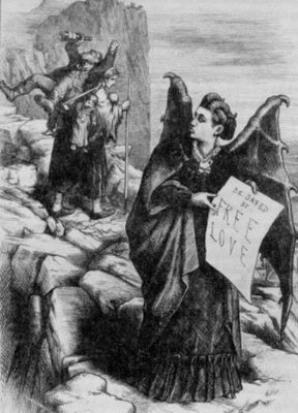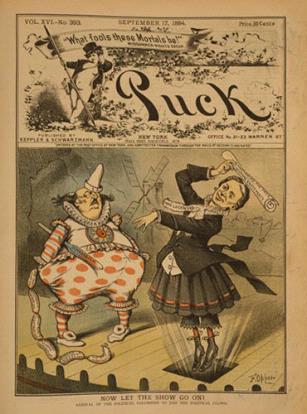
Women have been front and center during this 2012 election campaign, but as objects, not subjects. Women have been talked about and at by the predominately male punditry and candidates for political office. Male voices and perspectives dominate discussions about issues of particular relevance for women, such as reproductive rights, definitions of rape, and jobs. So, where are the women? What are they doing?
Two eminently qualified, experienced, and articulate women —Dr. Jill Stein and Ms. Cheri Honkala—ran for President and Vice-President of the United States on the Green Party’s ticket. Most Americans, however, I suspect did not know that. Few of the millions of people who watched the presidential debates, knew that Dr. Stein was blocked from participating, despite that fact that her campaign was approved for federal matching funds. Even fewer knew that, on the day of the second debate at Hofstra University, when Dr. Stein and Ms. Honkala tried to enter the campus, they were arrested. On November 6, many voters were undoubtedly surprised to see the names of Dr. Stein and Ms. Honkala on the ballot, despite the fact that their names appeared on approximately 85% of the ballots.
None of the above is surprising, given the marginal media coverage of Dr. Stein and Ms. Honkala.
 Women have been trying to break into presidential politics since the late 1800s. First up was Victoria Claflin Woodhull, a complex, controversial, charismatic woman endowed with great beauty who promulgated radical ideas from free love to socialism. She spent her early years as a magnetic healer and clairvoyant in her father’s traveling medicine show. In 1868 she and assorted family members, including her sister Tennessee, settled in New York City,where, despite rumors of fraud, blackmail and prostitution, or perhaps because of it, she and Tennessee secured the backing of the wealthy Cornelius Vanderbilt and opened up a lucrative brokerage firm. Next, she targeted another male bastion—politics–and announced her presidential ambitions in the New York Herald in April 1871. A year later she arranged her presidential nomination by the People’s Party, soon renamed the Equal Rights Party. Frederick Douglass, a former slave, abolitionist, and newspaper editor, was the vice-presidential nominee, although without his approval.
Women have been trying to break into presidential politics since the late 1800s. First up was Victoria Claflin Woodhull, a complex, controversial, charismatic woman endowed with great beauty who promulgated radical ideas from free love to socialism. She spent her early years as a magnetic healer and clairvoyant in her father’s traveling medicine show. In 1868 she and assorted family members, including her sister Tennessee, settled in New York City,where, despite rumors of fraud, blackmail and prostitution, or perhaps because of it, she and Tennessee secured the backing of the wealthy Cornelius Vanderbilt and opened up a lucrative brokerage firm. Next, she targeted another male bastion—politics–and announced her presidential ambitions in the New York Herald in April 1871. A year later she arranged her presidential nomination by the People’s Party, soon renamed the Equal Rights Party. Frederick Douglass, a former slave, abolitionist, and newspaper editor, was the vice-presidential nominee, although without his approval.
Her campaign had a song, “Victory for Victoria,” and the novelty of her candidacy garnered some media attention, but never in a way that caused her candidacy to be taken seriously. She was caricaturized in a cartoon as a Mrs. Satan advocating free love and referenced in headlines as a prostitute. Shortly before the election, she published an expose of a powerful preacher’s affair with a parishioner in her newspaper Woodhull & Claflin’s Weekly. That got her arrested under the Comstock Act for sending “obscene material” through the mail. On election day, she was in jail. There is no record of her name on a ballot or of her receiving any votes.
Although Victoria Woodhull’s candidacy was marginalized and ridiculed by the media, her name has remained visible in history. She is the subject of a musical, “Onward Victoria,” (1980); a play, “The First Woman” (2010); an opera “Mrs President” (2012); several biographies; a company with a comprehensive web site www.victoriawoodhull.org and a historical marker in her birthplace, Homer, Ohio, titled “First Woman Candidate for President of the United States.”
Belva Lockwood was the second female presidential candidate and the first to run a full-throated campaign. Growing up without advantages and left a young widow with a three-year old daughter, the independent-minded Belva went on to earn both college and law school degrees. Determined to end discrimination against women lawyers, she relentlessly lobbied Congress until it passed legislation allowing women to practice law before the U.S. Supreme Court, thus becoming the first woman to gain that privilege.
In 1884 Belva Lockwood was recruited to run for president on the National Equal Rights Party ticket. Marietta Stow, a newspaper publisher, was the vice-presidential candidate. Although Susan B. Anthony and others in the woman suffrage movement thought her candidacy would be a distraction, Lockwood disagreed and accepted the nomination.
Putting forth a multi-point platform that included women’s suffrage, Native American rights, protection of public lands, and judicial appointments, she launched a nationwide campaign. Large audiences paid to hear her speak. The media paid attention with coverage that ranged from mild interest to ridicule. She was lampooned in many political cartoons that appeared in mass circulation publications.

Almost 5,000 people voted for Belva Lockwood in 1884. Heartened, she ran again in 1888, but the novelty had worn off. The media was not interested, neither were many voters. But Belva Lockwood had no regrets. She had made her point in the 19th century: women could be players in presidential politics, a point women are still trying to make in the 21st century.
Images, top to bottom:
“Mrs. Satan” cartoon from Harper’s Weekly, February 17, 1873
Portrait of Victoria Woodhull, c. 1869
Portrait of Belva Lockwood, 1880s (the time of her campaigns)
“Punch and Judy” cartoon of Lockwood and Benjamin Butler from Puck, September 17, 1884, Library of Congress



